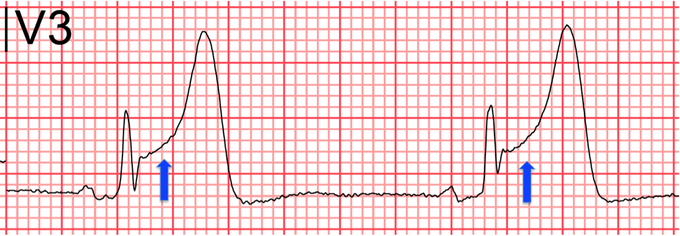


Differential Diagnosis of ST-segment Elevation on ECG
In addition to signs and symptoms, ECG is an important diagnostic tool in case of cardiovascular disorders. The ST-segment elevation on ECG can be indicative of number of conditions: 1. STEMI ST-segment elevation is indicative of coronary artery occlusion leading to myocardial ischemia. 2. Pericarditis Inflammation of pericardium can cause ST-segment elevation on ECG. The condition usually presents with chest pain. 3. Left Bundle Branch Block (LBBB) Acute and chronic LBBB can be exhibited on ECG as ST-segment elevation. Prolonged, abnormally-shaped QRS complexes and deep S waves on lead V1 to V3 are also present. 4. Brugada Syndrome The ST-segment elevation can be demonstrated in lead V1 and V2 in brugada syndrome. It signifies disease of myocardial sodium channels. 5. Left ventricular hypertrophy The thickening of left ventricle can result in ST-segment elevation on ECG. Reference: https://www.saem.org/about-saem/academies-interest-groups-affiliates2/cdem/for-students/online-education/m3-curriculum/group-electrocardiogram-(ecg)-rhythm-recognition/stemi Image via: https://www.ecgmedicaltraining.com/what-is-a-stemi/
Don't judge if I am wrong only a EMT and only 1 ecg lead. It's probably not LBBB or pericarditis because I need a whole ecg to determine that. STEMI is possible but there usually a pattern of ST elevation and depression so with a ecg am not calling STEMI. So I am going to call Left Ventricular Hypertrophy.
hello! if you're referring to the attached photo, it's just for reference. otherwise, the post aims at encouraging students to learn about other causes of st-segment elevation.


